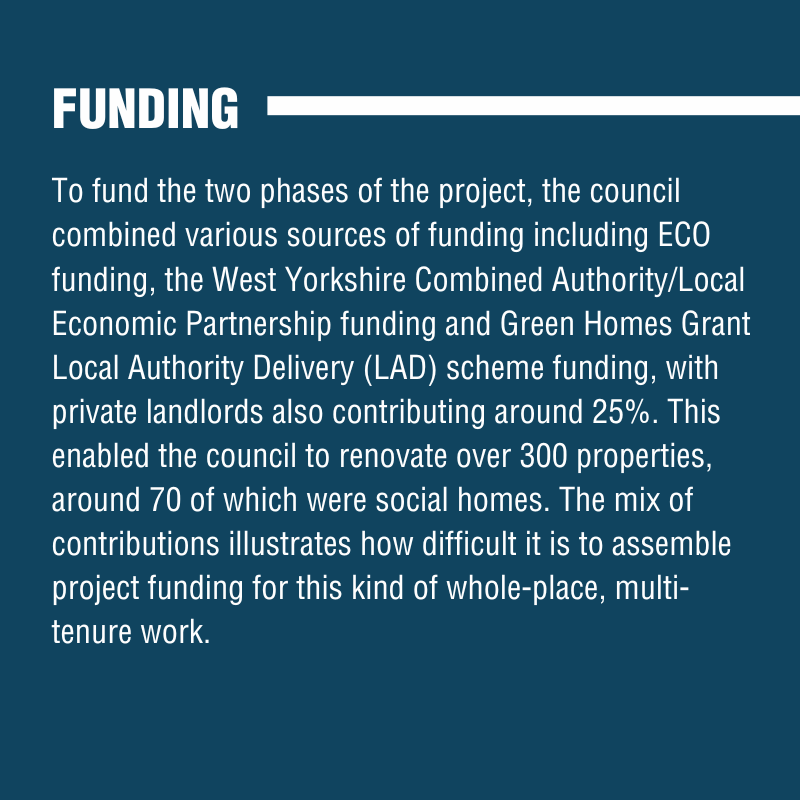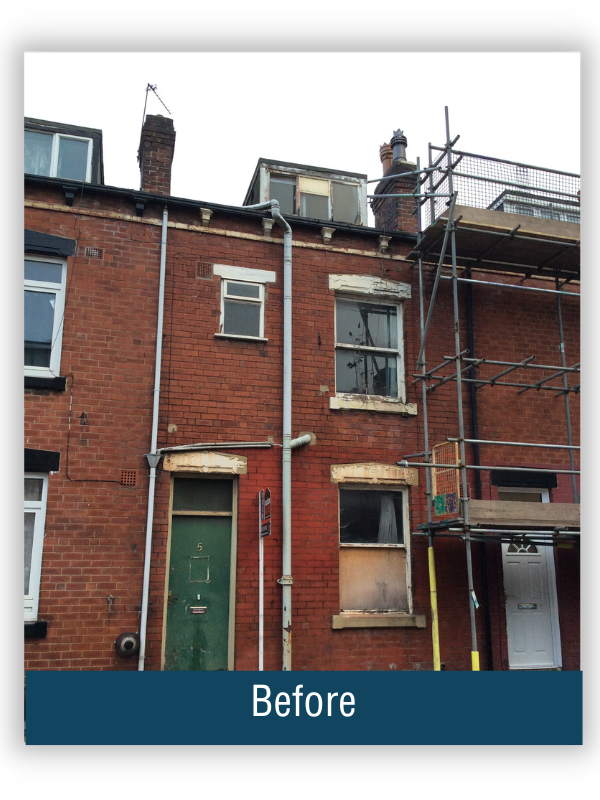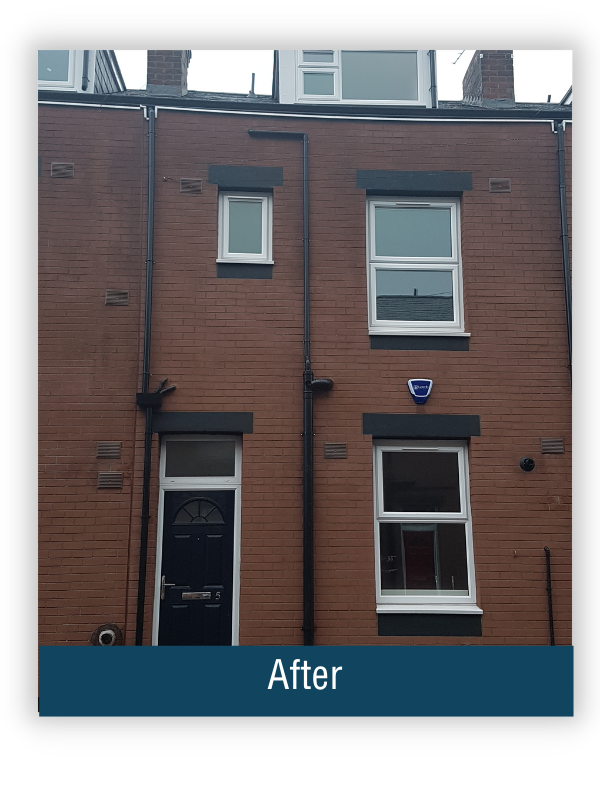ACTION
Once the funding was secured, the council undertook a means assessment of each property to assess how much each would be required to pay. For private rented properties, the landlord was charged 25% of the costs of renovation, for owner occupied, the residents paid 0-25% depending on their income levels. In these priority neighbourhoods, owners are often expected to pay very little.
As with many projects, initially uptake was slow from private properties. Therefore, Leeds prioritised retrofitting 40 council houses at the start of Phase 1 to show the improvement and to start conversations, this created a snowball effect and private landlords and homeowners began to want the works too.
The council worked to identify the homes with the greatest need for retrofit, including external wall insulation (EWI), room in roof insulation, new windows, new doors and central heating. Prior to installing insulation, the project also dealt with existing disrepairs (i.e. leaking roofs, lack of damp proof courses, repointing) to bring the whole home up to a high standard.
The council utilised a disused building in the community as a site office, to enable the smooth delivery of materials but also to become a presence within the community. This enabled them to develop a holistic approach where residents could access other council services including money saving advice and fire safety checks.
IMPACT
By focusing on regeneration works, particularly EWI, the council were able to drastically improve both the costs of heating homes and the look of the neighbourhood. They retrofitted 330 properties, transforming the lives of the residents, increasing pride in their neighbourhood and stimulating more residents to undertake their own home improvements, in turn further regenerating the area.
The council also worked with Leeds Beckett University to monitor and evaluate the success of the retrofits. Their study found that prior to renovation, the average temperature in some homes was 12 degrees. Following renovation, this rose to 18 degrees.
The council received positive anecdotal feedback from residents explaining how the works had transformed their lives. One mother of four described the difficulties she had keeping her home warm prior to the work and now, the children have an affordably warm home where they can do their homework.
Phase 1 was so well received by local residents that when the council announced phase 2 of the project, 90% of targeted properties had signed up within a month. The council updated Energy Performance Certificates (EPCs) for all homes, finding that on average each property saved 2.5 tonnes of CO2 per year, giving a total saving of 84 tonnes of carbon across the lifetime of each home, and a saving of around 25%.





